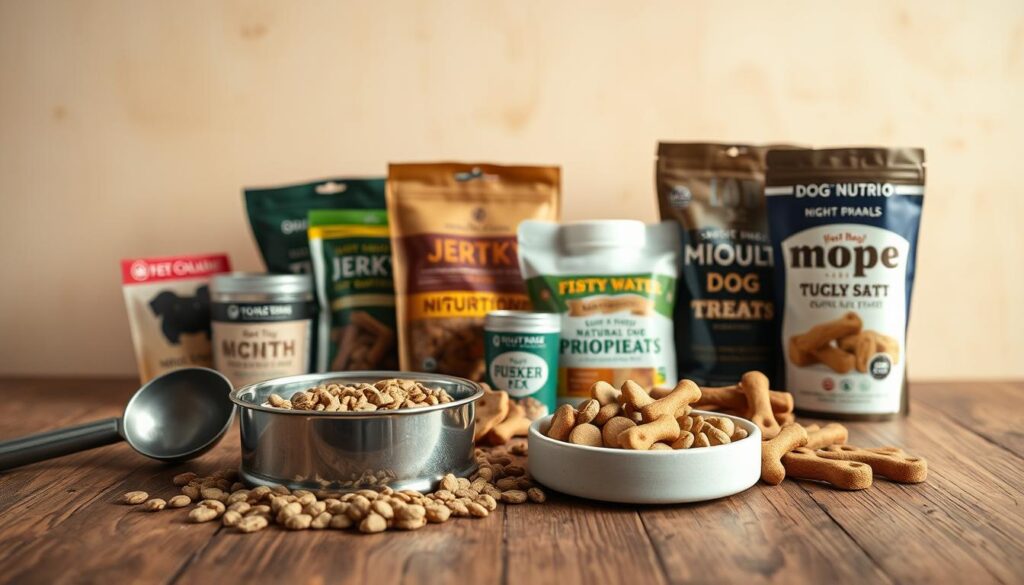Many owners of this affectionate breed are surprised when their usually enthusiastic companion turns up their nose at meals. Known for their soulful expressions and eager-to-please nature, these intelligent dogs often show strong interest in eating. But when that enthusiasm fades, it can leave families puzzled and concerned.
Understanding why a typically food-focused dog becomes fussy requires looking at both physical and behavioural factors. Health issues, environmental changes, or even subtle shifts in routine can impact their eating habits. Their sensitive disposition means solutions must balance nutritional needs with emotional well-being.
This guide explores practical strategies tailored to your pet’s unique personality and needs. We’ll discuss how factors like age, activity levels, and diet quality influence mealtime behaviour. You’ll learn to create positive feeding experiences while ensuring your companion gets essential nutrients for optimal health.
Key Takeaways
- Appetite changes in this breed often stem from health or emotional factors
- Successful solutions consider both physical and psychological needs
- Tailor feeding approaches to your dog’s age and lifestyle
- Consistency and patience are crucial when addressing eating issues
- Always rule out medical concerns with a vet first
Understanding Cocker Spaniel Appetite and Behaviour
Owners often notice their pets’ eating habits change unexpectedly. While some variations are normal, persistent refusal signals deeper issues. Recognising patterns helps separate temporary preferences from health concerns.
Recognising Natural Eating Patterns
Healthy adults typically maintain consistent routines. Younger pets might eat quickly, while seniors often take longer. Watch for these signs:
- Regular meal times with steady portion sizes
- Occasional skipped meals (1-2 weekly)
- Interest in treats between feedings
Common Reasons for Food Refusal
Both physical and emotional factors influence eating. This table shows key differences:
| Medical Causes | Behavioural Triggers |
|---|---|
| Dental pain | Stress from routine changes |
| Digestive issues | Bowl placement discomfort |
| Medication side effects | Preference for specific textures |
| Age-related taste loss | Overfeeding with snacks |
Recent environment changes affect sensitive breeds more than others. A study found 68% of selective eaters developed preferences after ingredient switches. Always check expiry dates and storage conditions first.
Expert Strategies for Cocker Spaniel Food Motivation
Tailored approaches make all the difference when addressing selective eating habits. Start by observing your companion’s daily rhythms and physical responses to different textures and flavours. This groundwork helps create personalised solutions that respect individual preferences while meeting nutritional standards.
Pinpointing Essential Nutritional Requirements
Begin with a veterinary check to rule out health concerns. Professionals often recommend:
- Modifying dry biscuit textures with broth or warm water
- Measuring portions using kitchen scales
- Establishing fixed feeding times with 10-minute access windows
These adjustments help maintain interest without overfeeding. Research shows structured routines reduce anxiety in 74% of pets with erratic eating patterns.
Adapting Approaches Through Life Stages
Younger companions thrive with puzzle feeders that stimulate natural foraging instincts. For senior pets, try hand-feeding small portions or warming meals to enhance aroma. Adjust protein levels and meal frequency based on activity changes – active adults may need 20% more calories than less mobile counterparts.
Consistency proves vital across all ages. Avoid frequent diet swaps, as 58% of pets develop preferences after three formula changes. Instead, introduce variations gradually while monitoring reactions.
Nutrition Essentials and Ingredient Insights
Proper nourishment forms the foundation of every dog’s vitality and enthusiasm for meals. Selecting ingredients that align with biological needs enhances both health and mealtime engagement. This balance becomes particularly crucial for breeds with sensitive digestion or specific energy requirements.

Choosing the Right Proteins, Fats and Carbs
High-quality animal proteins like chicken and kangaroo support lean muscle maintenance. These sources provide essential amino acids that regulate appetite signals. Healthy fats from fish oil or hemp seeds maintain skin condition while supporting cognitive function.
Low-GI carbohydrates such as purple sweet potato offer sustained energy. This prevents blood sugar crashes that might affect eating patterns. Always prioritise whole-food sources over processed fillers in your companion’s diet.
Importance of Vitamins and Minerals
Key nutrients like zinc and B-complex vitamins influence taste perception and metabolism. Deficiencies in these areas often manifest as reduced interest in meals. Vitamin E from safflower oil aids nutrient absorption while combating inflammation.
When evaluating commercial foods, check labels for:
- Named protein sources as first ingredients
- Omega fatty acids from identifiable origins
- Fortification with chelated minerals
Remember that cooking methods impact nutrient availability. Gently prepared meals retain more vitamins than high-heat processed alternatives. For dogs with sensitivities, single-protein recipes often work best.
Tailoring Meal Plans for Every Life Stage
Nutritional needs shift significantly as companions grow from playful youngsters to dignified seniors. Matching meals to each phase ensures proper development while maintaining enthusiasm for eating. This approach supports joint health, cognitive function, and energy levels across their 12-15 year lifespan.
Puppy to Adult Transition
Youngsters require 25% more calories per kilogram than adults during growth spurts. Focus on calcium-rich options like bone broth and minced sardines for skeletal development. Transition from four daily meals to two between 9-14 months, monitoring weight weekly.

Adjusting Portions for Senior Spaniels
Reduce calorie intake by 15% after age 10 while maintaining protein quality. Soften textures with steamed vegetables or bone broth for older dogs with dental concerns. Key adjustments include:
- Adding omega-rich fish oils for cognitive support
- Using raised feeders to ease digestion
- Splitting daily food into three smaller portions
Regular body condition scoring helps track changes. Vets recommend annual bloodwork to tailor diet plans as metabolism slows.
Enhancing Mealtime: Practical Tips and Tricks
Successful feeding routines extend beyond nutrition. A dog’s surroundings and dining setup profoundly impact their relationship with meals. Small adjustments to environment and equipment often yield dramatic improvements in eating habits.
Creating a Comfortable Feeding Environment
Choose quiet zones away from foot traffic. Loud noises startle sensitive eaters – 63% of dogs prefer corners with wall backing. Soft lighting reduces visual stress, while non-slip mats prevent bowl sliding.
Multi-pet homes need separate stations. Feed dogs in different rooms or use visual barriers. This prevents competition and lets each companion eat at their natural pace.
| Bowl Feature | Ideal Choice | Avoid |
|---|---|---|
| Material | Stainless steel | Plastic (harbours smells) |
| Stability | Weighted base | Lightweight designs |
| Depth | Shallow (5cm) | Deep containers |
| Position | Chest height | Floor-level placement |
Optimising Bowl Choice and Meal Timing
Elevated dishes support better posture. For Cocker Spaniels, wide-rimmed bowls keep ears clean. Stick to fixed schedules – offer meals at sunrise and sunset when digestion peaks.
Remove uneaten portions after 10 minutes. This reinforces routine without pressure. Use puzzle toys for 15% of daily intake to stimulate natural foraging behaviour.
Training sessions double as snack opportunities. Reserve 20% of kibble for rewarding calm behaviour. This approach strengthens bonds while maintaining dietary balance.
Incorporating Real Food and Supplement Options
Revamping your companion’s diet with fresh, whole ingredients can reignite their enthusiasm for mealtime. Thoughtfully prepared food meals bridge the gap between nutrition and enjoyment, offering tailored solutions for selective eaters.
Benefits of Human-Grade Meals
Gently cooked recipes preserve natural flavours and nutrients better than high-heat processing. These complete balanced options use identifiable ingredients like free-range meats and seasonal vegetables. Custom portions address specific needs while supporting healthy hydration through broths and moisture-rich mixes.
How Supplements Support Overall Health
Targeted additions enhance wellbeing without overwhelming sensitive systems. ProDog’s science-backed range includes:
- Protect (turkey tail mushroom) for allergy management
- Flexx (turmeric blend) promoting joint mobility
- Digest (marshmallow root) soothing gut health
Combined with fresh food, these formulas address common breed-specific concerns through natural, bioavailable nutrients.



